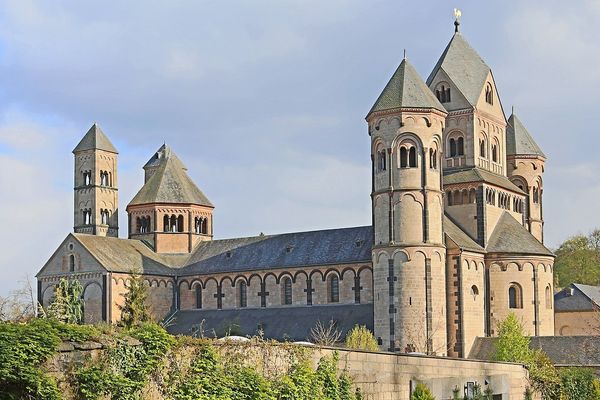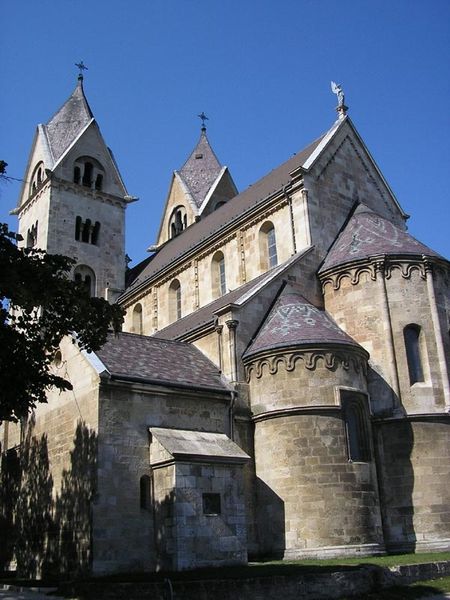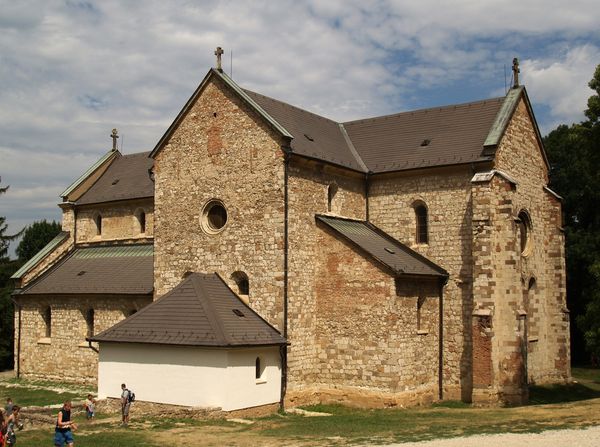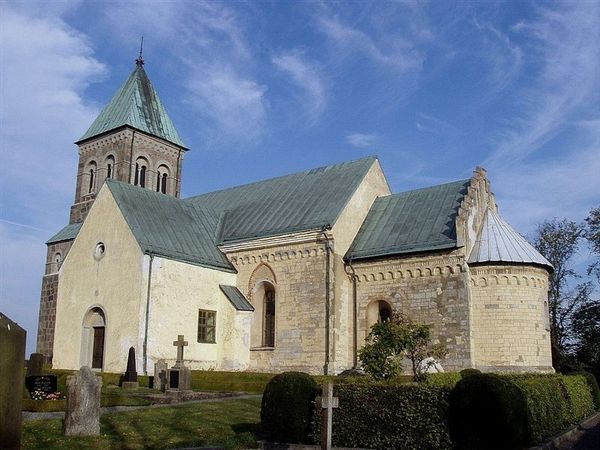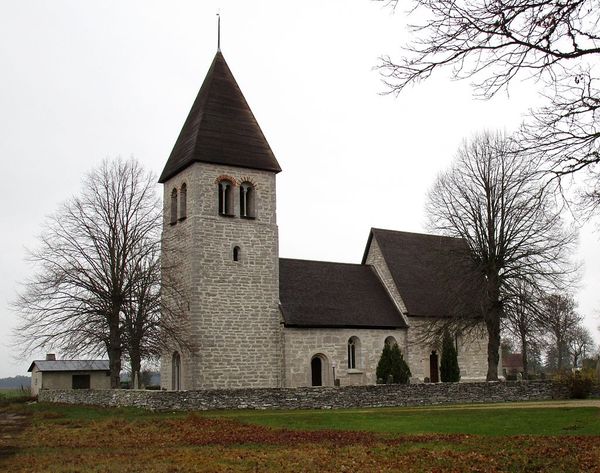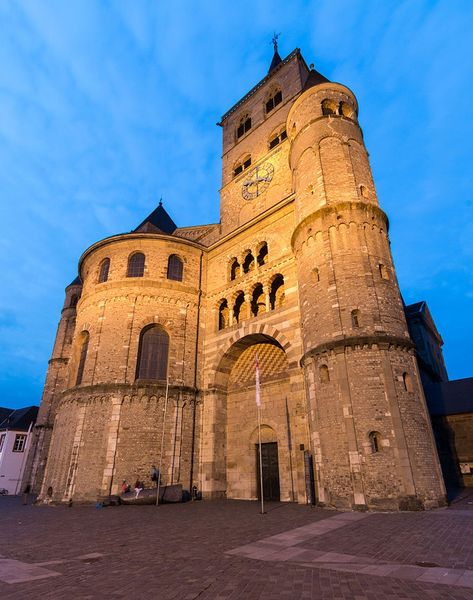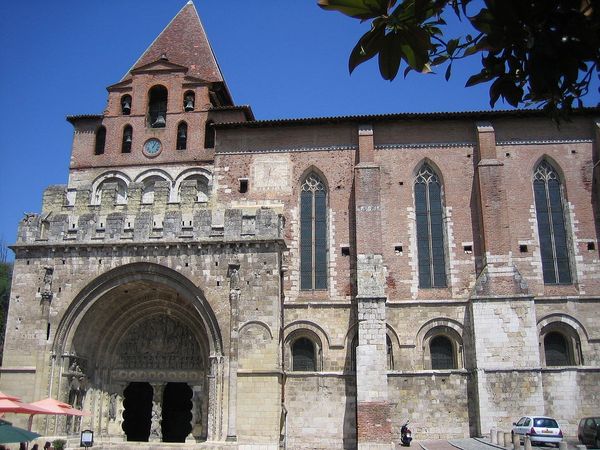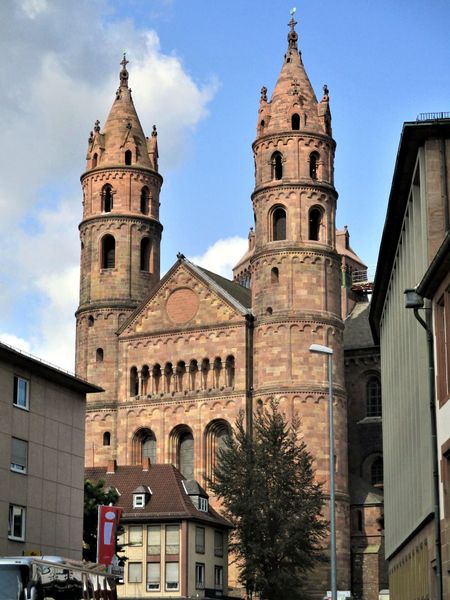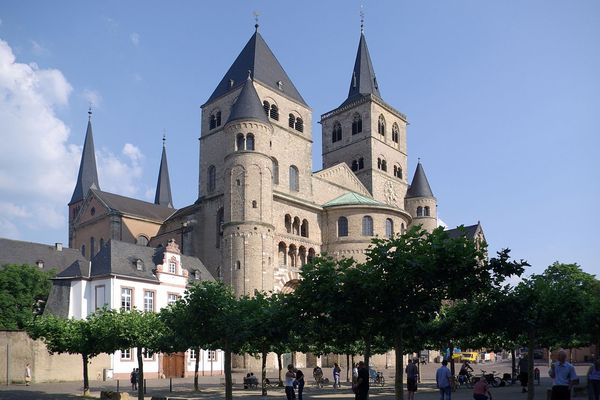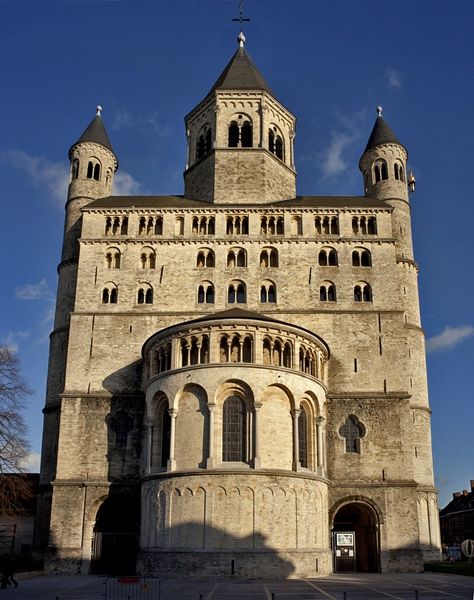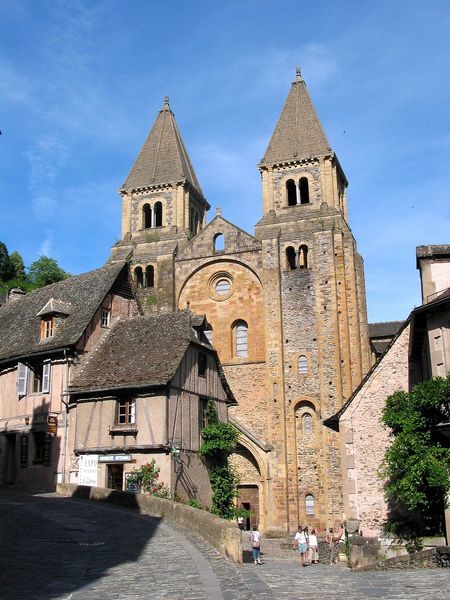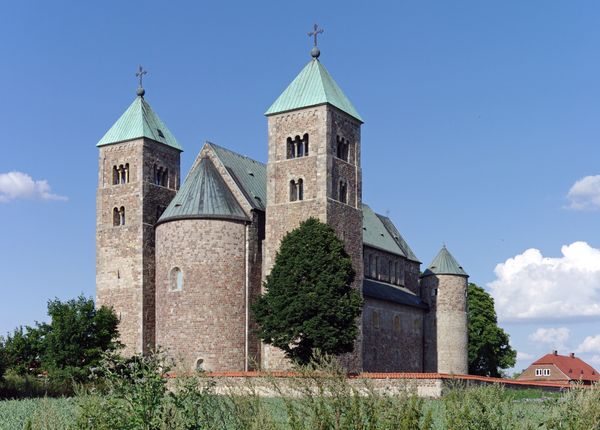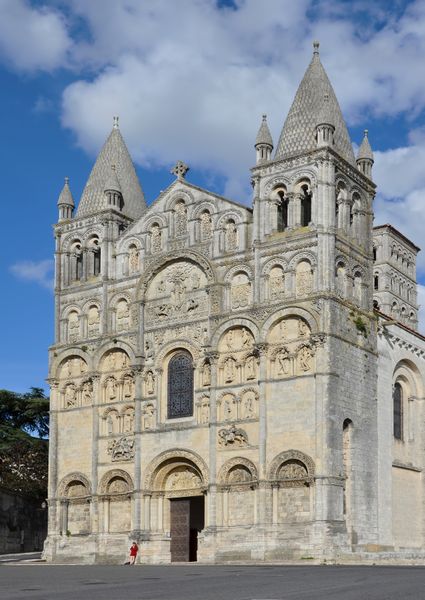
photography, architecture
#
public art
#
medieval
#
landscape
#
historic architecture
#
photography
#
romanesque
#
arch
#
architecture
Copyright: Public domain
Curator: Immediately, I sense a powerful groundedness. It is as if the stone itself rises organically from the earth, its geometric simplicity echoing the very structure of the landscape. Editor: We're looking at a photograph of the West End of Maria Laach Abbey in Germany. Construction on the Abbey began in 1093, which means it's a key example of Romanesque architecture in the region. Curator: Observe the facade's strict symmetry and repetition of rounded arches; elements meticulously aligned to direct the eye upward, to divine realms, yet held in check by horizontal lines that firmly root it. Editor: Maria Laach Abbey wasn't just a place of worship; it was a center of knowledge and influence, particularly within the Rhineland. The church's construction reflects the wealth and power of its patrons and the wider socio-political forces at play in Medieval Europe. Curator: Consider the materiality; the weight and texture of each stone speaks volumes. The color palette is kept simple: beige tones, a mix of browns and greys. There is a sort of tactile visual effect as you analyze the patterns of the architectural decisions here. Editor: Indeed, and let’s consider how imagery of the building itself – such as this photograph – served to reinforce the Church's authority, emphasizing its enduring presence through careful framing and idealized depiction for different forms of social validation. Curator: And yet, its power rests also on the interplay of light and shadow. The rhythmic series of windows are not simply openings but sculpted voids defining spatial volumes. Editor: I agree. Studying buildings like Maria Laach helps us to understand the past, reflecting on present social stratifications while we consider artistic forms of expressions across time. Curator: It invites a contemplative space for reflections. Editor: And on history that created such space in the first place.
Comments
No comments
Be the first to comment and join the conversation on the ultimate creative platform.
